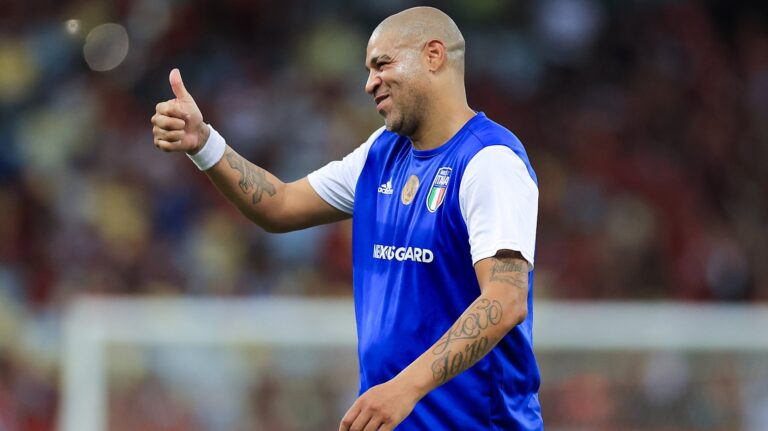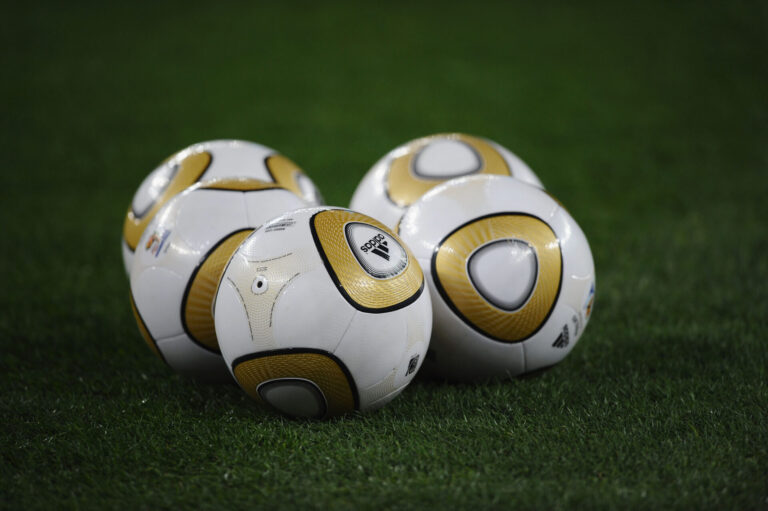The Ajax Coaching Philosophy Explained
The Netherlands is known for its creative essence, and Amsterdam is the centre of artistry and pure talent. It’s a highly-yielding ground for constant development. The Ajax club is a microcosm of Dutch culture. It’s a place renowned for its production of world-class gifted players.
It suffices to say it’s the club that put trust in Johan Cruyff, one of the greatest footballers and coaches of all time and gave him the chance to express himself on the field. Whereas, he wouldn’t stand much of a prayer at other clubs that prioritise physical traits and power over talent. At Ajax, technique, intelligence, and natural ability with the ball are much appreciated for the sake of playing attractive attacking football.
From the junior levels to the seniors, Ajax adopts a unified, esteemed philosophy based on versatility and adaptability, which makes them distinctive from other clubs around the world. So, what are the Ajax selection criteria for their players? And what are the core principles of the Dutch club philosophy?
TIPS Model
TIPS is an abbreviation of technique, insight, personality, and speed—four key components in forming an Ajax player. The Dutch club had set these four concepts as the foundation and brand of their way of playing football.
To make their way through, players must be technically skilled and know how to control the ball, given its crucial importance. At Ajax, they intend to develop the relationship between the player and the ball. The round thing is a tool of team play; once the player succeeds in establishing a consolidating bond with it, he’s declaring his readiness to move on to the next step: insight.
Not only at Ajax but players in general need to develop their sense of perception and comprehension of the game. It’s a matter of experience. What made Ajax’s talents so mature were their training methods, which are simulations of the real game. By adopting similar strategies, young players evolve in understanding the details of every action in a given situation during the game. In other words, sessions based on real matches help players accumulate the necessary experience to deal with complex situations in actual games.
As a consequence, players gather colossal storage as a guide for them to instantly come up with a solution to a given problem under pressure, which requires a strong personality, the third criterion in the TIPS model.
At Ajax, personality means mental and emotional strength, attitude, and leadership traits. The Dutch club is one of the first advocates of the psychological side of the game because it’s a major aspect of a player’s success on and off the pitch. Ajax invests their time and money to take care of their players’ personalities and develop their sense of leadership to ensure that they can handle tough moments when the pressure is at its highest level.
The last component of the TIPS model is speed. It’s an indispensable element to be capable of playing a proactive game. It includes being physically fast and mentally rapid in thinking, decision-making, and reacting.
The TIPS model is useless without effective communication. Building an internal language eases players’ ability to play their opponents. It helps them understand the game plan and the coach’s intentions. Van Gaal once stated, “The second element of my philosophy is communication. Here, too, I first had to create the necessary framework. At the outset, I engineered situations in which players were obligated, step by step, to communicate with each other and with the coaching staff.“
The Ajax Playing Style
The Ajax system is a manifestation of Rinus Michels 1970s system of “Total Football.” The concept is based on making the pitch as big as possible in possession and compact, narrowing it out.
The Ajax way consists of playing the ball forward, pressing the opposition in half, and operating in tight spaces. To do so, Ajax are convinced that the 4-3-3 shape is the most suitable formation to bring their football philosophy to reality. They believe that the 4-3-3 is an effective system to generate highly technical players and attractive attacking football. The formation offers vertical symmetry, triangles, and diamond shapes, which means more passing options all over the pitch.
According to Rinus Michels, “Total Football was the consequence of my search for a way to break open the enforced defences. This required actions during the build-up and attack that would surprise the opponent. This is the reason that I chose to have frequent changes in the positions within and between the three lines.“Team Building: The Road to Success
Importance of Children
Ajax’s philosophy focuses on kids, as they are the most willing class to learn, adapt, and apply. The Dutch club approach guarantees that every child must get coached based on nearly four key components. The first one is standards. Every child had to develop in terms of scoring, protecting his team from conceding goals, and setting the perfect time to switch the ball. Adding to that, Ajax training sessions concentrate on improving their junior players in the buildup phase due to their crucial role in the club’s playing style. In other words, Ajax is keen to implement strategies to help their young players develop a sense of responsibility towards the ball and the importance of teamwork in the construction phase.
The second element is repetition. Ajax is one of the first clubs to embrace trial-and-error methodology. The concept is centred on preparing training sessions that include constant involvement, strategic planning, quick decision-making, and a culture of winning. What makes Ajax Club unique is their ability to take into account team diversity manifested in age, capability, and insight. Blending the three criteria contributes to squad development, unity, and success.
Children can’t understand Ajax Club’s philosophy without the clarity of the coaching. Simplification of the instructions, allowing questions, and endorsing the culture of suggestion are the bridge between coaches and players’ minds on one part and the best learning method on the other.
The Ajax Coaching Philosophy Tactics
In general, the Dutch methodology of Ajax specifically takes into consideration the three phases of the game. It’s paramount for a kid to get familiar with the events in possession, get used to playing smartly out of it to regain the ball back and learn how to transition from defence to attack and vice versa.
As it’s mentioned, Ajax played with a 4-3-3 turned into a 3-4-3 with a centre-back joining the midfield to form a diamond shape. Ajax players are informed to be lined up in a structure that conserves triangles and diamonds all over the pitch using the “Dutch Vision” techniques (4v4). This geometrical approach provides the team with a dimensional advantage, securing depth and width.
Movements are the keys to Ajax football’s success. The “Total Football” concept was built around the fluidity of position. For instance, if the left-sided defender pushes high, the left-sided midfielder takes the responsibility to drop in and cover him to operate as the left-sided defender temporarily. It must be an ebb and flow of constant movements to keep the shape of triangles and to make sure vacated spaces are covered, as they are the reference in Dutch culture.
The Ajax No. 10
Ajax plays with one forward and a number ten tasked with playmaking duties. Ajax’s playmaker has to excel at playing between the opposition’s defence and midfield lines. One of his roles is to draw defenders’ attention and trick them into pulling them out of their positions for the sake of freeing spaces for the striker to take advantage of. In addition, Ajax number ten is entrusted with the job of dropping into midfield to assist in the construction phase by overloading central areas to bring the team to the opposition’s final third.
Wide Wingers
The “Total Football” idea revolves around making the pitch wider in possession. As a result, gaps open up between the opposition’s centre-back and fullback, which gives the wingers the edge over their markers either by taking them on or getting the ball played through one-twos or layoffs behind their backs. When Ajax decides to build their attacks down the flanks, they plan to put their wingers in 1v1 situations. In order to create a numerical match near the touch lines for their wingers to perform the task, players move the ball around while doing so.
Midfield
Ajax usually plays with four midfielders. As we mentioned, the centre-back (number 4) steps up alongside two holding midfielders and a playmaker. It’s crystal clear that those men in the midfield must be ideal with the ball because they are the central backbone of the team who dictate the tempo of the game, control its cadence, and link between defence and attack.
Moreover, Ajax expect their midfielders to make runs with the ball because it can create two against one on each side or open zones for them to find the back of the net. Out of possession, they have to measure distances to know the timing and manner of how to close down space and cut the passing lanes off. In addition, they have to endure and be tireless because of the ground they must cover.
Defense
Ajax’s defence is the backbone of the team, as attacks always start with their goalkeeper. His missions aren’t limited to shot-stopping but he has to be perfect with the ball to initiate the buildup, pressure-resistant to distribute the play accurately and an astute sweeper when the team is out of possession. Moving to the back four, the centre-backs are the real playmakers. In Rinus Michels and Louis Van Gaal’s systems, the number four is important due to his complex tactical role.
To elaborate more, it’s mandatory for him to set the appropriate timing for when he has to join the midfield and when to get back alongside the other centre-back. That’s why Ajax Club set the insight criterion as an obligation to play such proactive football. Another required characteristic is game reading. An Ajax centre-back is supposed to conduct the press, analyse distances between players, and direct his teammates. It’s obvious that an Ajax centre-back is entrusted to accomplish complex tactical missions by the book. He has to blend his defensive traits with the offensive qualities required to contribute to the buildup and attacking play.
Ajax centre-backs are dissimilar to the usual and it’s likewise for their fullbacks. First of all, they have to show commitment and discipline in their playing, mixed with simplicity. The aim is to get them used to playing flawless games in and out of possession. Therefore, an Ajax fullback has to be fast, with a strong tactical presence that enables him to be precognitive when he has to close down space, protect teammates, and mark opponents with the ball. It’s obligatory for him to be able to play with both feet, use his body to receive the ball, and deal with the pressure.
Ajax’s player development methodology has long been viewed as one of the most esteemed and prestigious perspectives in the football world. Their training models, including the TIPS, are a concrete example of how a youth academy and a club are supposed to be run to produce top-notch players. Ajax’s philosophy guarantees that its footballers are versatile, technically skilled, and tactically smart, with strong personalities to prepare them to excel at the highest levels of the game.
Finally, to set a football philosophy that demands intelligence and flair with the ball, to play attacking football, and to be satisfied by nothing but winning titles with a unique identity on the pitch centred around totality. This has been the case with AFC Ajax throughout history. It is a club that embraces the culture of talent and youth development and obligates its managers to stick to “Total Football” concepts. That’s why it’s no surprise to find only five coaches who succeeded in shining within this culture: Rinus Michels, Stefan Kovacs, Johan Cruyff, Louis Van Gaal, and Erik Ten Hag in recent years.









One Comment